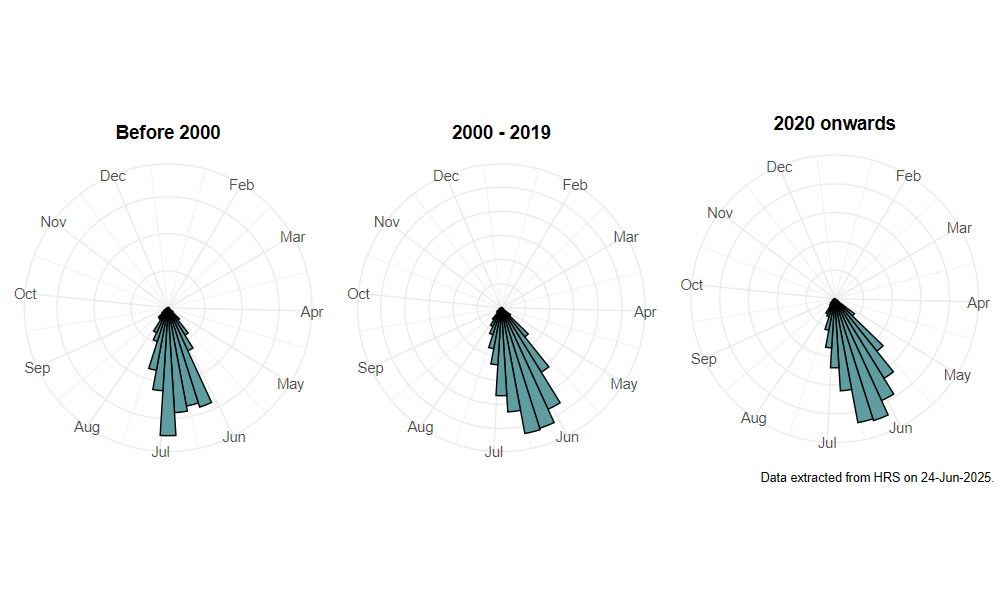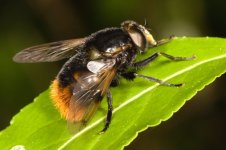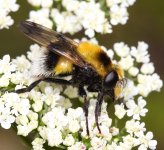Volucella bombylans (Linnaeus, 1758)
Identification
Identification difficulty = 1. ![]()
![]() according to Ball & Morris, 20241
according to Ball & Morris, 20241
Biology
The larva is a scavenger and a predator in nests of bumblebees, where they probably feed on larvae and pupae. The adults are convincing bumblebee mimics, occurring in two main colour forms, one of which mimics red-tailed, the other white-tailed bumblebees. They are often found visiting flowers or resting on sunny vegetation along woodland edges, rides and glades, mature hedgerows or in scrub. This species occurs rather earlier in the season than other members of the genus.
Flight period
The following plots show the number of unique records per week excluding those reported to be of immature stages.

Distribution
Widespread and common throughout Britain, including a number of Scottish islands.

Trends
The following plots show the Frescalo TFactor vs year and a map of the rescaled frequency (all records) for the species.
-
Ball, S., & Morris, R. (2024). Hoverflies of Britain and Ireland. WILDGuides (3rd ed.). Oxford: Princeton University Press. ↩

